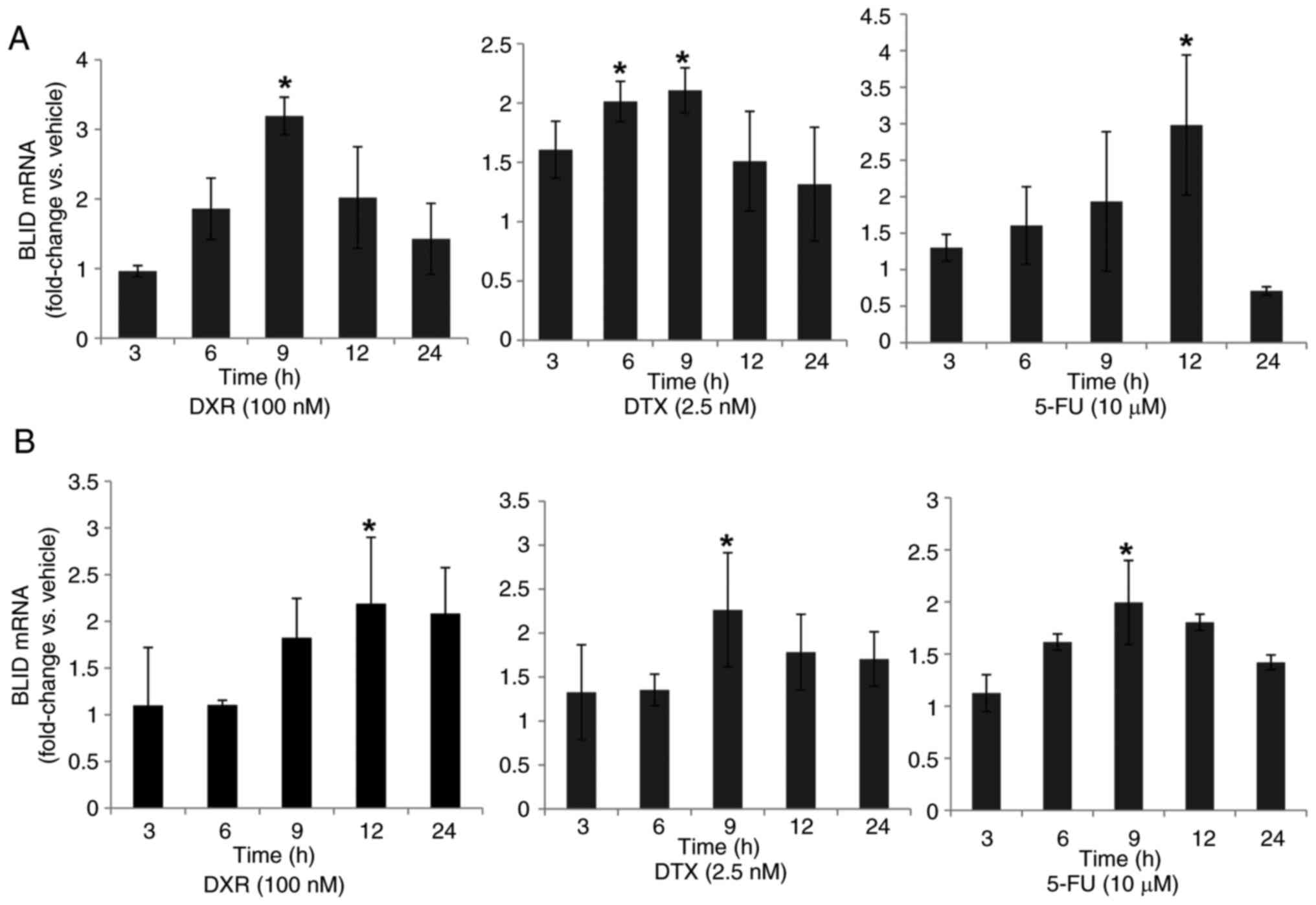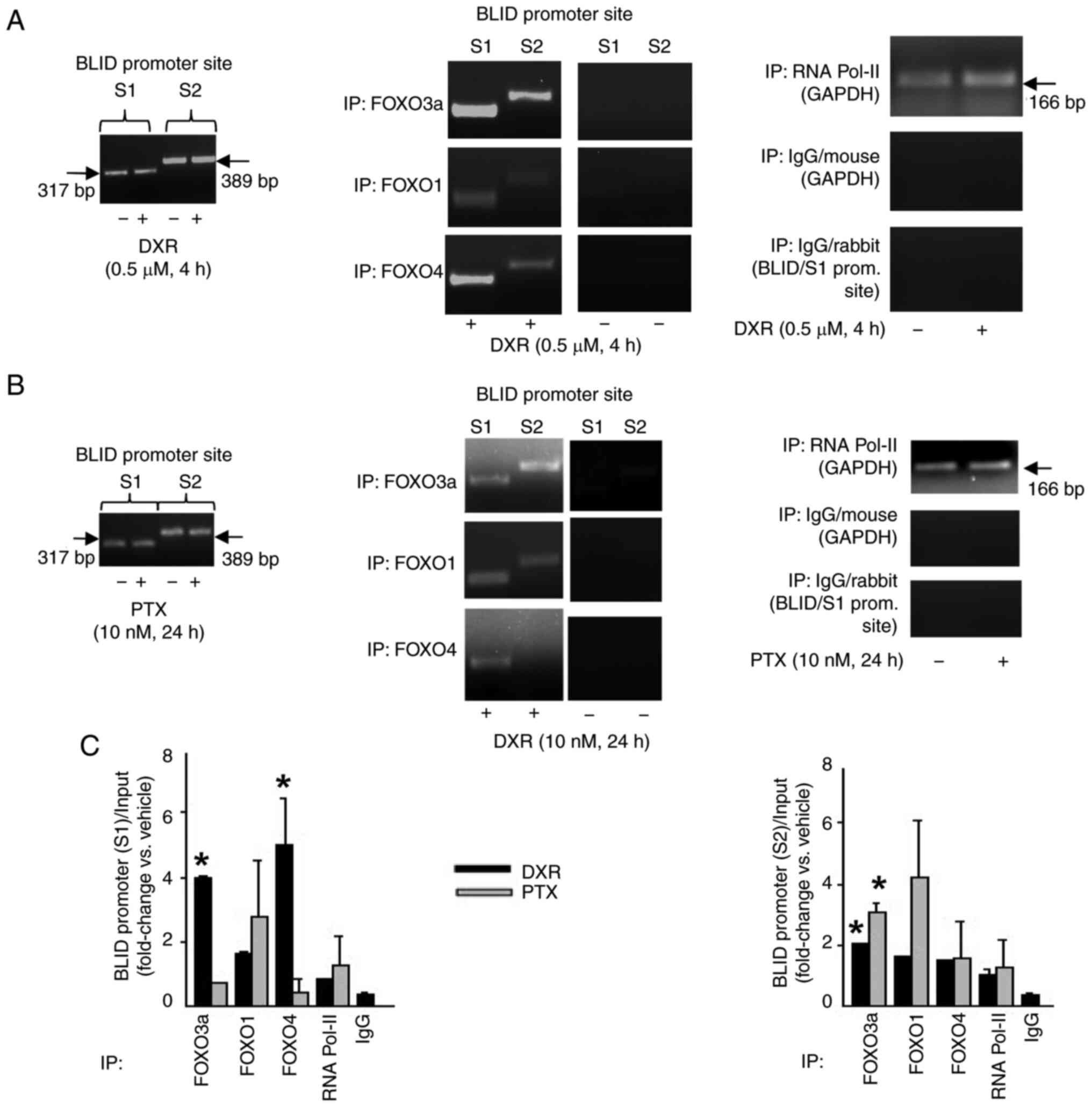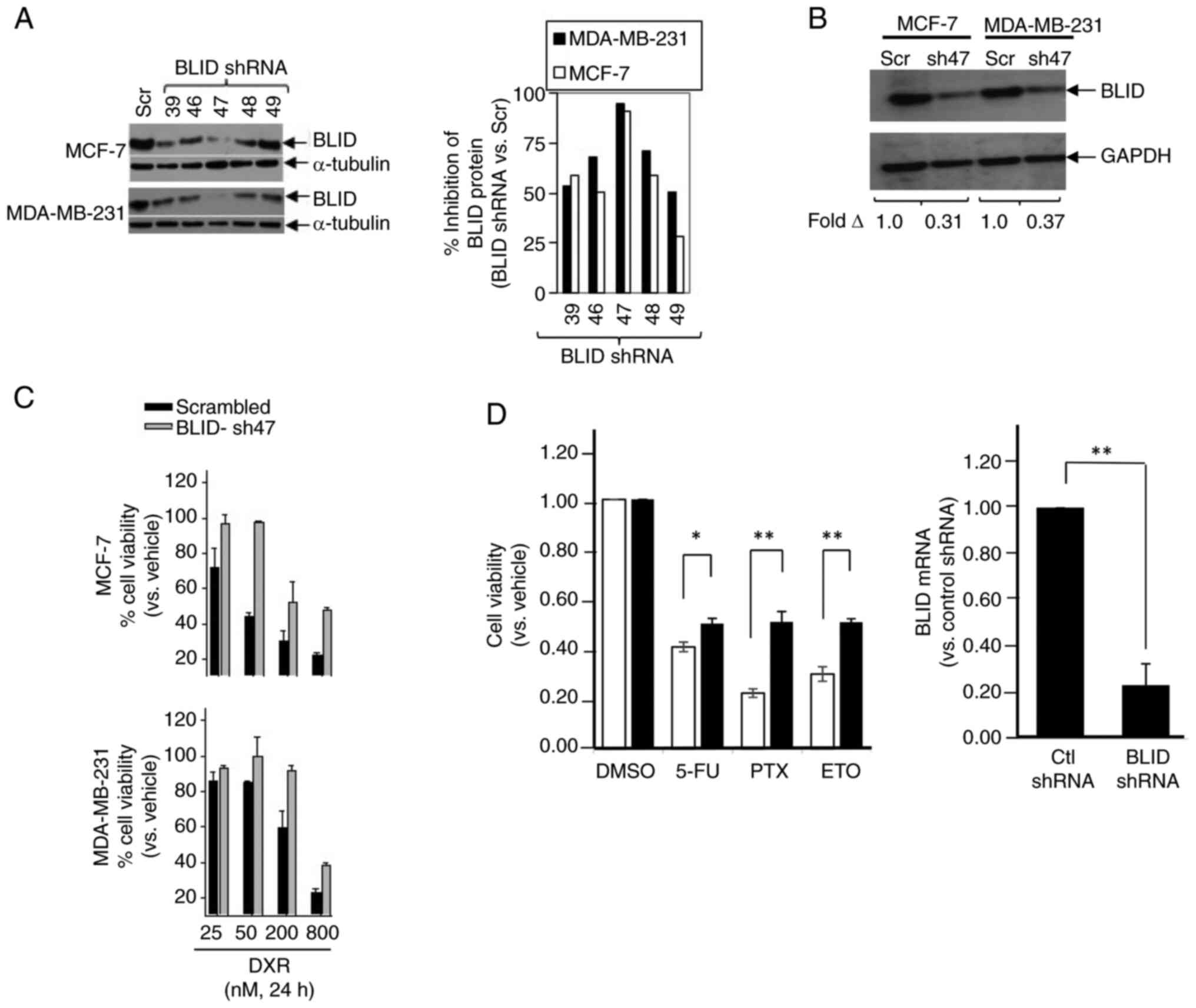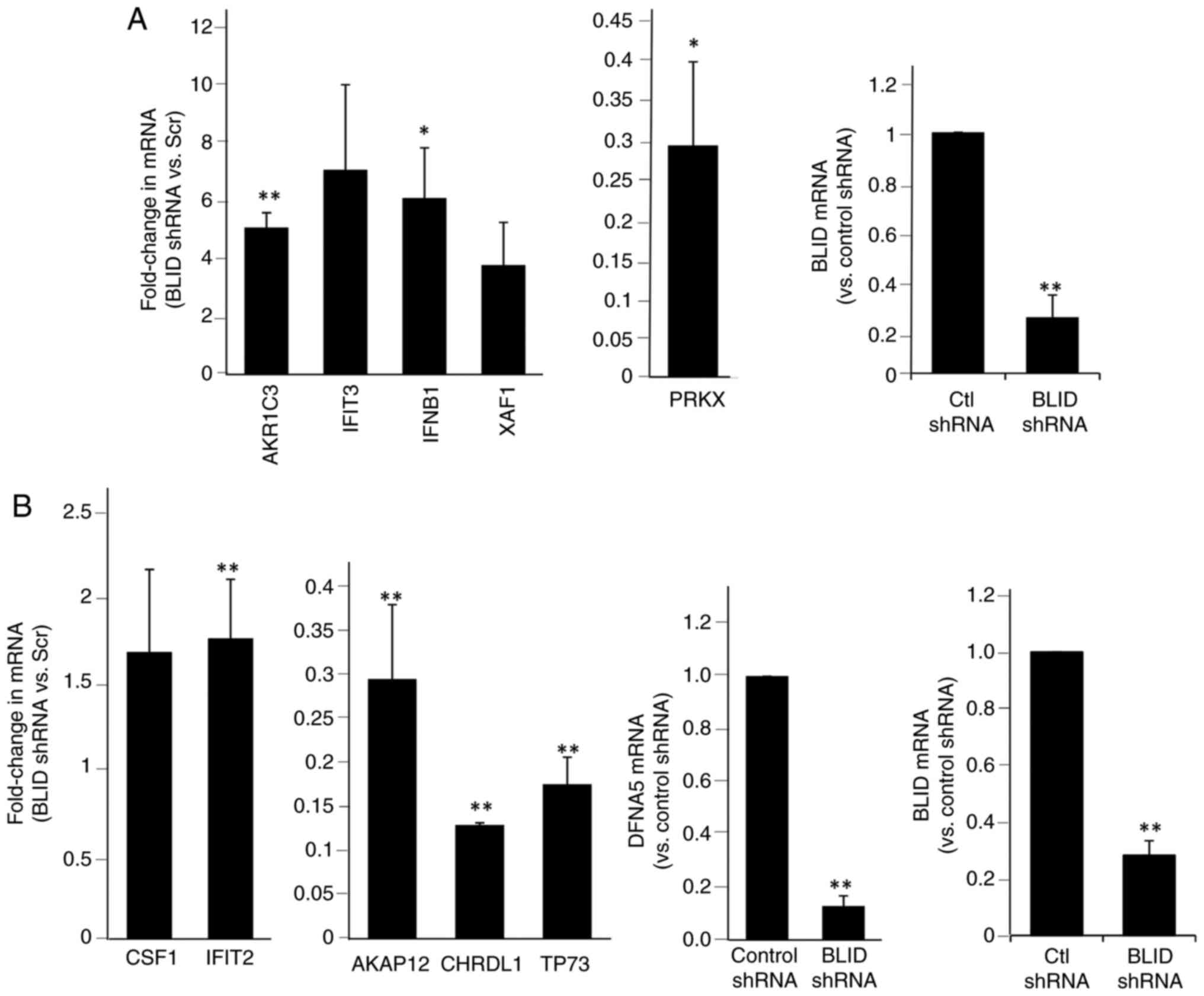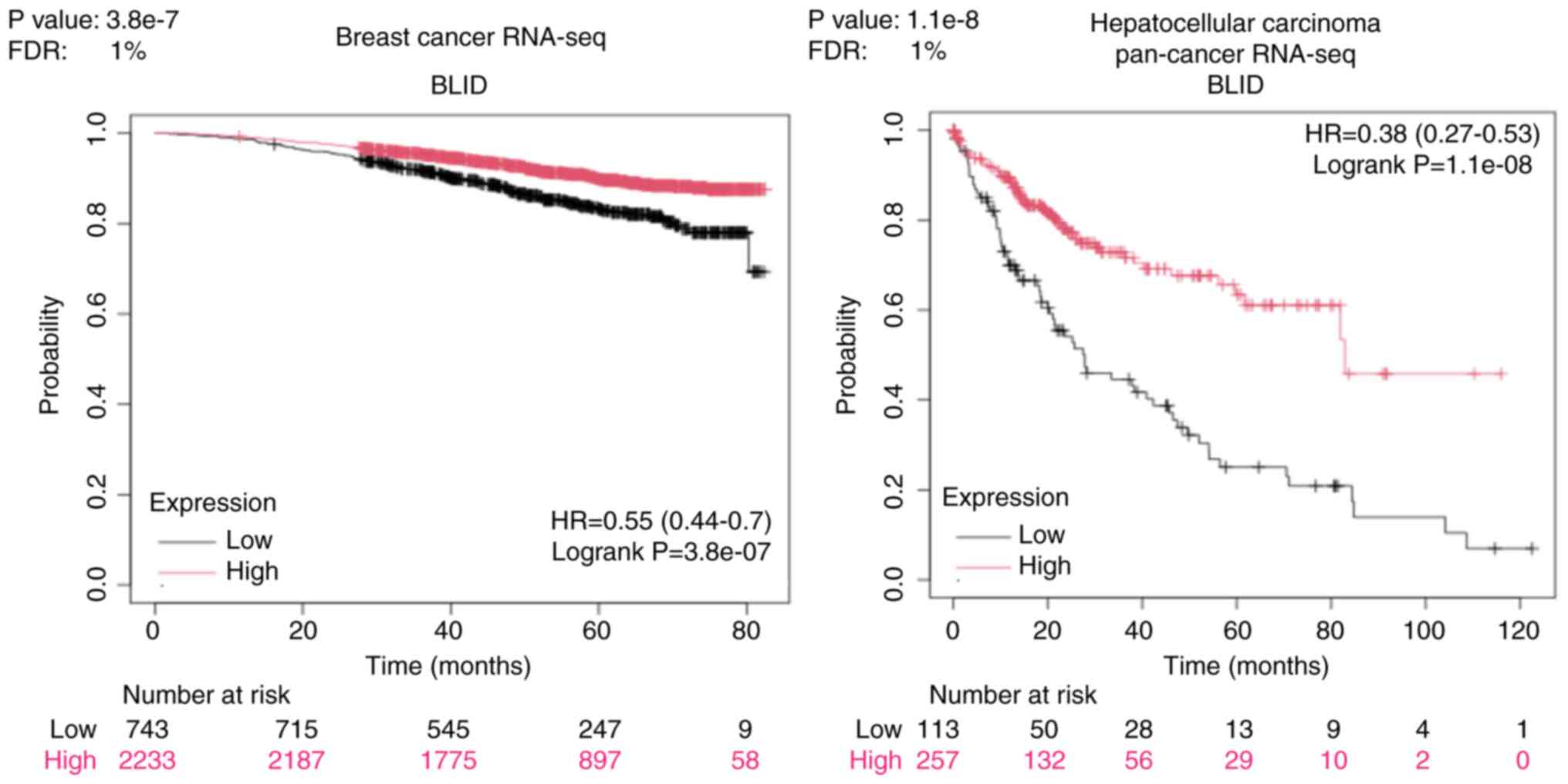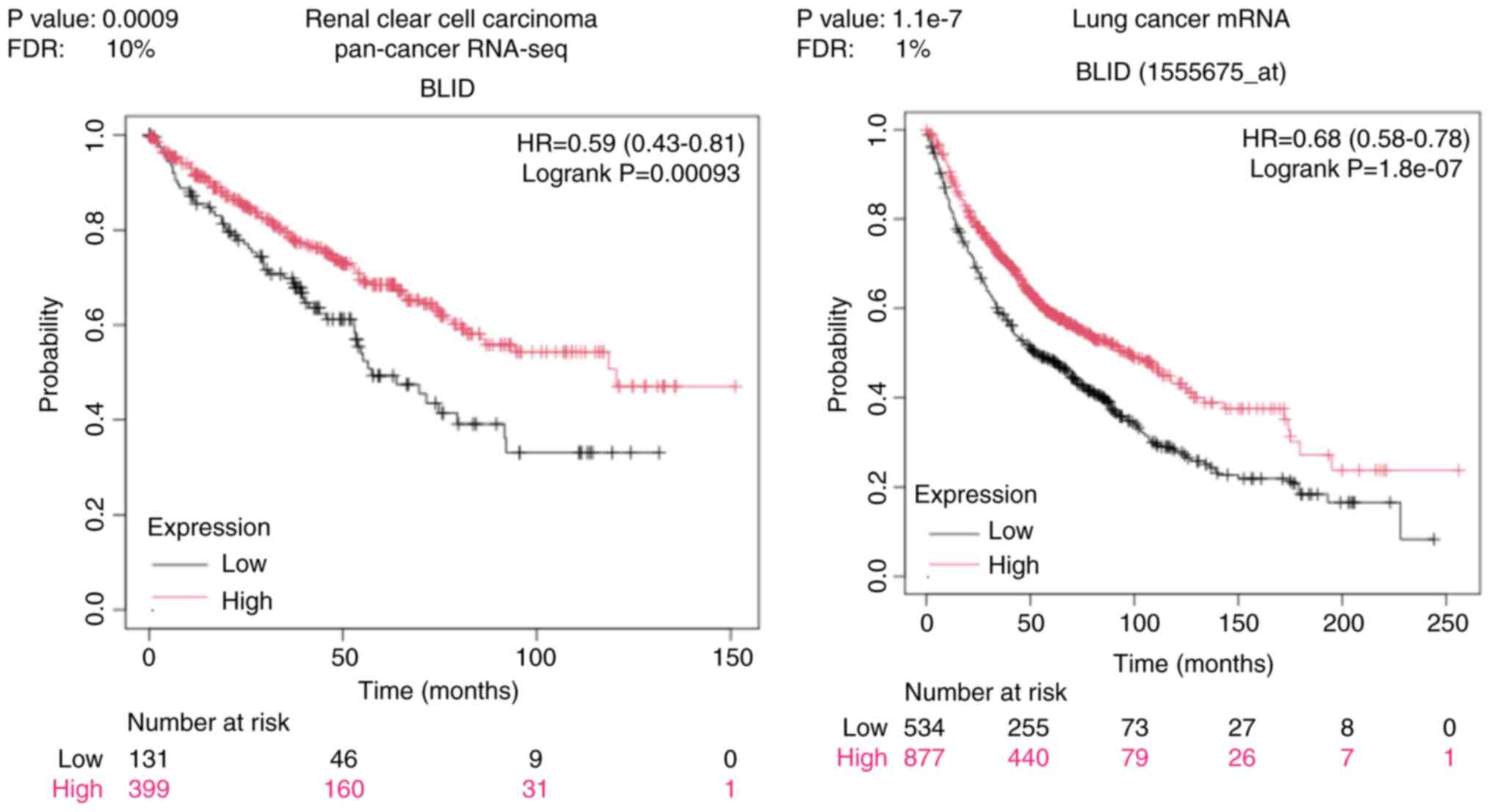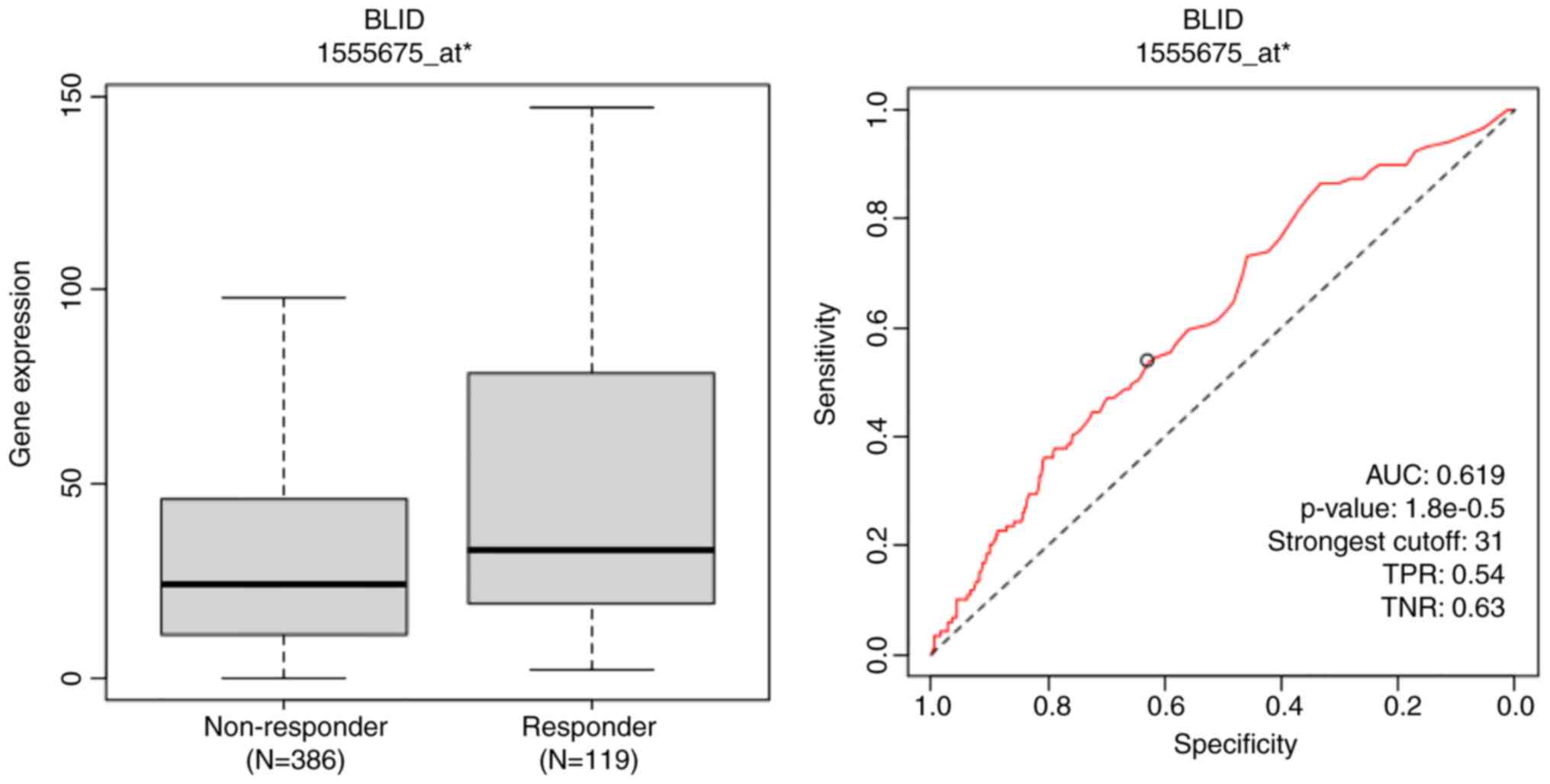|
1
|
Hanahan D: Hallmarks of cancer: New
dimensions. Cancer Discov. 12:31–46. 2022. View Article : Google Scholar : PubMed/NCBI
|
|
2
|
Swain SM, Shastry M and Hamilton E:
Targeting HER2-positive breast cancer: Advances and future
directions. Nat Rev Drug Discov. 22:101–126. 2023. View Article : Google Scholar : PubMed/NCBI
|
|
3
|
Will M, Liang J, Metcalfe C and
Chandarlapaty S: Therapeutic resistance to anti-oestrogen therapy
in breast cancer. Nat Rev Cancer. 23:673–685. 2023. View Article : Google Scholar : PubMed/NCBI
|
|
4
|
Harbeck N, Penault-Llorca F, Cortes J,
Gnant M, Houssami N, Poortmans P, Ruddy K, Tsang J and Cardoso F:
Breast cancer. Nat Rev Dis Primers. 5:662019. View Article : Google Scholar : PubMed/NCBI
|
|
5
|
Hong R and Xu B: Breast cancer: An
up-to-date review and future perspectives. Cancer Commun (Lond).
42:913–936. 2022. View Article : Google Scholar : PubMed/NCBI
|
|
6
|
Jin X, Zhou YF, Ma D, Zhao S, Lin CJ, Xiao
Y, Fu T, Liu CL, Chen YY, Xiao WX, et al: Molecular classification
of hormone receptor-positive HER2-negative breast cancer. Nat
Genet. 55:1696–1708. 2023. View Article : Google Scholar : PubMed/NCBI
|
|
7
|
Park YH, Im SA, Park K, Wen J, Lee KH,
Choi YL, Lee WC, Min A, Bonato V, Park S, et al: Longitudinal
multi-omics study of palbociclib resistance in
HR-positive/HER2-negative metastatic breast cancer. Genome Med.
15:552023. View Article : Google Scholar : PubMed/NCBI
|
|
8
|
Pacini C, Duncan E, Gonçalves E, Gilbert
J, Bhosle S, Horswell S, Karakoc E, Lightfoot H, Curry E, Muyas F,
et al: A comprehensive clinically informed map of dependencies in
cancer cells and framework for target prioritization. Cancer Cell.
42:301–316.e9. 2024. View Article : Google Scholar : PubMed/NCBI
|
|
9
|
Calissi G, Lam EW and Link W: Therapeutic
strategies targeting FOXO transcription factors. Nat Rev Drug
Discov. 20:21–38. 2021. View Article : Google Scholar : PubMed/NCBI
|
|
10
|
Sunters A, Madureira PA, Pomeranz KM,
Aubert M, Brosens JJ, Cook SJ, Burgering B, Coombes RC and Lam EW:
Paclitaxel-induced nuclear translocation of FOXO3a in breast cancer
cells is mediated by c-Jun NH2-terminal kinase and Akt. Cancer Res.
66:212–220. 2006. View Article : Google Scholar : PubMed/NCBI
|
|
11
|
Ho KK, McGuire VA, Koo CY, Muir KW, de
Olano N, Maifoshie E, Kelly DJ, McGovern UB, Monteiro LJ, Gomes AR,
et al: Phosphorylation of FOXO3a on Ser-7 by p38 promotes its
nuclear localization in response to doxorubicin. J Biol Chem.
287:1545–1555. 2012. View Article : Google Scholar : PubMed/NCBI
|
|
12
|
Pellegrino M, Rizza P, Donà A, Nigro A,
Ricci E, Fiorillo M, Perrotta I, Lanzino M, Giordano C, Bonofiglio
D, et al: FoxO3a as a positive prognostic marker and a therapeutic
target in tamoxifen-resistant breast cancer. Cancers (Basel).
11:18582019. View Article : Google Scholar : PubMed/NCBI
|
|
13
|
Gómez Tejeda Zañudo J, Mao P, Alcon C,
Kowalski K, Johnson GN, Xu G, Baselga J, Scaltriti M, Letai A,
Montero J, et al: Cell line-specific network models of
ER+ breast cancer identify potential PI3Kα inhibitor
resistance mechanisms and drug combinations. Cancer Res.
81:4603–4617. 2021. View Article : Google Scholar : PubMed/NCBI
|
|
14
|
Luo L, Zhang Z, Qiu N, Ling L, Jia X, Song
Y, Li H, Li J, Lyu H, Liu H, et al: Disruption of FOXO3a-miRNA
feedback inhibition of IGF2/IGF-1R/IRS1 signaling confers Herceptin
resistance in HER2-positive breast cancer. Nat Commun. 12:26992021.
View Article : Google Scholar : PubMed/NCBI
|
|
15
|
McLysaght A and Hurst LD: Open questions
in the study of de novo genes: What, how and why. Nat Rev Genet.
17:567–578. 2016. View Article : Google Scholar : PubMed/NCBI
|
|
16
|
Broustas CG, Gokhale PC, Rahman A,
Dritschilo A, Ahmad I and Kasid U: BRCC2, a novel BH3-like
domain-containing protein, induces apoptosis in a caspase-dependent
manner. J Biol Chem. 279:26780–26788. 2004. View Article : Google Scholar : PubMed/NCBI
|
|
17
|
Broustas CG, Ross JS, Yang Q, Sheehan CE,
Riggins R, Noone AM, Haddad BR, Seillier-Moiseiwitsch F, Kallakury
BV, Haffty BG, et al: The proapoptotic molecule BLID interacts with
Bcl-XL and its downregulation in breast cancer correlates with poor
disease-free and overall survival. Clin Cancer Res. 16:2939–2948.
2010. View Article : Google Scholar : PubMed/NCBI
|
|
18
|
Cavalli LR, Santos SC, Broustas CG, Rone
JD, Kasid UN and Haddad BR: Assignment of the BLID gene to 11q24.1
by fluorescence in situ hybridization. Cancer Genet Cytogenet.
186:120–121. 2008. View Article : Google Scholar : PubMed/NCBI
|
|
19
|
Cavalli LR, Noone AM, Makambi KH, Rone JD,
Kasid UN and Haddad BR: Frequent loss of the BLID gene in
early-onset breast cancer. Cytogenet Genome Res. 135:19–24. 2011.
View Article : Google Scholar : PubMed/NCBI
|
|
20
|
Li X, Su P, Liu X, Kong X, Zhang X, Zhang
H and Yang Q: Aberrant BLID expression is associated with breast
cancer progression. Tumour Biol. 35:5449–5452. 2014. View Article : Google Scholar : PubMed/NCBI
|
|
21
|
Li X, Kong X, Wang Y and Yang Q: BRCC2
inhibits breast cancer cell growth and metastasis in vitro and in
vivo via downregulating AKT pathway. Cell Death Dis. 4:e7572013.
View Article : Google Scholar : PubMed/NCBI
|
|
22
|
Livak KJ and Schmittgen TD: Analysis of
relative gene expression data using real-time quantitative PCR and
the 2(−Delta Delta C(T)) method. Methods. 25:402–408. 2001.
View Article : Google Scholar : PubMed/NCBI
|
|
23
|
Das PM, Ramachandran K, vanWert J and
Singal R: Chromatin immunoprecipitation assay. Biotechniques.
37:961–969. 2004. View Article : Google Scholar : PubMed/NCBI
|
|
24
|
Day TF, Kallakury BVS, Ross JS, Voronel O,
Vaidya S, Sheehan CE and Kasid UN: Dual targeting of EGFR and IGF1R
in the TNFAIP8 knockdown non-small cell lung cancer cells. Mol
Cancer Res. 17:1207–1219. 2019. View Article : Google Scholar : PubMed/NCBI
|
|
25
|
Zhang C, Kallakury BV, Ross JS, Mewani RR,
Sheehan CE, Sakabe I, Luta G, Kumar D, Yadavalli S, Starr J, et al:
The significance of TNFAIP8 in prostate cancer response to
radiation and docetaxel and disease recurrence. Int J Cancer.
133:31–42. 2013. View Article : Google Scholar : PubMed/NCBI
|
|
26
|
Day TF, Mewani RR, Starr J, Li X,
Chakravarty D, Ressom H, Zou X, Eidelman O, Pollard HB, Srivastava
M and Kasid UN: Transcriptome and proteome analyses of TNFAIP8
knockdown cancer cells reveal new insights into molecular
determinants of cell survival and tumor progression. Methods Mol
Biol. 1513:83–100. 2017. View Article : Google Scholar : PubMed/NCBI
|
|
27
|
Györffy B, Lanczky A, Eklund AC, Denkert
C, Budczies J, Li Q and Szallasi Z: An online survival analysis
tool to rapidly assess the effect of 22,277 genes on breast cancer
prognosis using microarray data of 1809 patients. Breast Cancer Res
Treat. 123:725–731. 2010. View Article : Google Scholar : PubMed/NCBI
|
|
28
|
Menyhárt O, Nagy Á and Győrffy B:
Determining consistent prognostic biomarkers of overall survival
and vascular invasion in hepatocellular carcinoma. R Soc Open Sci.
5:1810062018. View Article : Google Scholar : PubMed/NCBI
|
|
29
|
Győrffy B: Survival analysis across the
entire transcriptome identifies biomarkers with the highest
prognostic power in breast cancer. Comput Struct Biotechnol J.
19:4101–4109. 2021. View Article : Google Scholar : PubMed/NCBI
|
|
30
|
Győrffy B: Transcriptome-level discovery
of survival-associated biomarkers and therapy targets in
non-small-cell lung cancer. Br J Pharmacol. 181:362–374. 2024.
View Article : Google Scholar : PubMed/NCBI
|
|
31
|
Győrffy B: Integrated analysis of public
datasets for the discovery and validation of survival-associated
genes in solid tumors. Innovation (Camb). 5:1006252024.PubMed/NCBI
|
|
32
|
Fekete J and Győrffy B: ROCplot.org:
Validating predictive biomarkers of chemotherapy/hormonal
therapy/anti-HER2 therapy using transcriptomic data of 3,104 breast
cancer patients. Int J Cancer. 145:3140–3151. 2019. View Article : Google Scholar : PubMed/NCBI
|
|
33
|
Kovács SA, Fekete JT and Győrffy B:
Predictive biomarkers of immunotherapy response with
pharmacological applications in solid tumors. Acta Pharmacol Sin.
44:1879–1889. 2023. View Article : Google Scholar : PubMed/NCBI
|
|
34
|
Kim SS, Rait A, Kim E, Pirollo KF, Nishida
M, Farkas N, Dagata JA and Chang EH: A nanoparticle carrying the
p53 gene targets tumors including cancer stem cells, sensitizes
glioblastoma to chemotherapy and improves survival. ACS Nano.
8:5494–5514. 2014. View Article : Google Scholar : PubMed/NCBI
|
|
35
|
Pirollo KF, Nemunaitis J, Leung PK, Nunan
R, Adams J and Chang EH: Safety and efficacy in advanced solid
tumors of a targeted nanocomplex carrying the p53 gene used in
combination with docetaxel: A phase 1b study. Mol Ther.
24:1697–1706. 2016. View Article : Google Scholar : PubMed/NCBI
|
|
36
|
Liu Y, Gong W, Panoutsopoulou K,
Singer-Cornelius T, Augustin K, Bronger H, Kiechle M, Dorn J,
Scorilas A, Avgeris M, et al: Association of high miR-27a, miR-206,
and miR-214 expression with poor patient prognosis and increased
chemoresistance in triple-negative breast cancer. Am J Cancer Res.
13:2471–2487. 2023.PubMed/NCBI
|
|
37
|
Petersen SL, Peyton M, Minna JD and Wang
X: Overcoming cancer cell resistance to Smac mimetic induced
apoptosis by modulating cIAP-2 expression. Proc Natl Acad Sci USA.
107:11936–11941. 2010. View Article : Google Scholar : PubMed/NCBI
|
|
38
|
Wu HH, Wu JJ, Cheng YW, Chen CY, Lee MC,
Goan YG and Lee H: cIAP2 upregulated by E6 oncoprotein via
epidermal growth factor receptor/phosphatidylinositol 3-kinase/AKT
pathway confers resistance to cisplatin in human papillomavirus
16/18-infected lung cancer. Clin Cancer Res. 16:5200–5210. 2010.
View Article : Google Scholar : PubMed/NCBI
|
|
39
|
Fulda S and Vucic D: Targeting IAP
proteins for therapeutic intervention in cancer. Nat Rev Drug
Discov. 11:109–124. 2012. View Article : Google Scholar : PubMed/NCBI
|
|
40
|
Sehgal K, Portell A, Ivanova EV, Lizotte
PH, Mahadevan NR, Greene JR, Vajdi A, Gurjao C, Teceno T, Taus LJ,
et al: Dynamic single-cell RNA sequencing identifies immunotherapy
persister cells following PD-1 blockade. J Clin Invest.
131:e1350382021. View Article : Google Scholar : PubMed/NCBI
|
|
41
|
Liu X, Xia S, Zhang Z, Wu H and Lieberman
J: Channelling inflammation: Gasdermins in physiology and disease.
Nat Rev Drug Discov. 20:384–405. 2021. View Article : Google Scholar : PubMed/NCBI
|
|
42
|
Kim MS, Lebron C, Nagpal JK, Chae YK,
Chang X, Huang Y, Chuang T, Yamashita K, Trink B, Ratovitski EA, et
al: Methylation of the DFNA5 increases risk of lymph node
metastasis in human breast cancer. Biochem Biophys Res Commun.
370:38–43. 2008. View Article : Google Scholar : PubMed/NCBI
|
|
43
|
Rogers C, Fernandes-Alnemri T, Mayes L,
Alnemri D, Cingolan G and Alnemri ES: Cleavage of DFNA5 by
caspase-3 during apoptosis mediates progression to secondary
necrotic/pyroptotic cell death. Nat Commun. 8:141282017. View Article : Google Scholar : PubMed/NCBI
|
|
44
|
Wang Y, Gao W, Shi X, Ding J, Liu W, He H,
Wang K and Shao F: Chemotherapy drugs induce pyroptosis through
caspase-3 cleavage of a gasdermin. Nature. 547:99–103. 2017.
View Article : Google Scholar : PubMed/NCBI
|
|
45
|
Lee KM, Guerrero-Zotano AL, Servetto A,
Sudhan DR, Lin CC, Formisano L, Jansen VM, González-Ericsson P,
Sanders ME, Stricker TP, et al: Proline rich 11 (PRR11)
overexpression amplifies PI3K signaling and promotes antiestrogen
resistance in breast cancer. Nat Commun. 11:54882020. View Article : Google Scholar : PubMed/NCBI
|
|
46
|
Vanhaesebroeck B, Perry MWD, Brown JR,
André F and Okkenhaug K: PI3K inhibitors are finally coming of age.
Nat Rev Drug Discov. 20:741–769. 2021. View Article : Google Scholar : PubMed/NCBI
|
|
47
|
Penning TM and Byrns MC: Steroid hormone
transforming aldo-keto reductases and cancer. Ann N Y Acad Sci.
1155:33–42. 2009. View Article : Google Scholar : PubMed/NCBI
|
|
48
|
He S, Chu X, Wu Y, Jiang J, Fang P, Chen
Y, Liu Y, Qiu Z, Xiao Y, Li Z, et al: Development of
Biaryl-containing Aldo-Keto Reductase 1C3 (AKR1C3) inhibitors for
reversing AKR1C3-mediated drug resistance in cancer treatment. J
Med Chem. 14:9537–9560. 2023. View Article : Google Scholar : PubMed/NCBI
|
|
49
|
Liu Y, Chen Y, Jiang J, Chu X, Guo Q, Zhao
L, Feng F, Liu W, Zhang X, He S, et al: Development of highly
potent and specific AKR1C3 inhibitors to restore the
chemosensitivity of drug-resistant breast cancer. Eur J Med Chem.
247:1150132023. View Article : Google Scholar : PubMed/NCBI
|
|
50
|
Borden EC: Interferons α and β in cancer:
Therapeutic opportunities from new insights. Nat Rev Drug Discov.
18:219–234. 2019. View Article : Google Scholar : PubMed/NCBI
|
|
51
|
Cheon H, Wang Y, Wightman SM, Jackson MW
and Stark GR: How cancer cells make and respond to interferon-I.
Trends Cancer. 9:83–92. 2023. View Article : Google Scholar : PubMed/NCBI
|
|
52
|
Doherty MR, Cheon H, Junk DJ, Vinayak S,
Varadanc V, Telli ML, Ford JM, Stark GR and Jackson MW:
Interferon-beta represses cancer stem cell properties in
triple-negative breast cancer. Proc Natl Acad Sci USA.
114:13792–13797. 2017. View Article : Google Scholar : PubMed/NCBI
|
|
53
|
Diamond M and Farzan M: The broad-spectrum
antiviral functions of IFIT and IFITM proteins. Nat Rev Immunol.
13:46–57. 2013. View Article : Google Scholar : PubMed/NCBI
|
|
54
|
Moy B, Rumble RB, Come SE, Davidson NE, Di
Leo A, Gralow JR, Hortobagyi GN, Yee D, Smith IE, Chavez-MacGregor
M, et al: Chemotherapy and targeted therapy for patients with human
epidermal growth factor receptor 2-negative metastatic breast
cancer that is either endocrine-pretreated or hormone
receptor-negative: ASCO guideline update. J Clin Oncol.
39:3938–3958. 2021. View Article : Google Scholar : PubMed/NCBI
|
|
55
|
Cheon H, Holvey-Bates EG, McGrail DJ and
Stark GR: PD-L1 sustains chronic, cancer cell-intrinsic responses
to type I interferon, enhancing resistance to DNA damage. Proc Natl
Acad Sci USA. 118:e21122581182021. View Article : Google Scholar : PubMed/NCBI
|
|
56
|
Wang Z, Qin J, Zhao J, Li J, Li D, Popp M,
Popp F, Alakus H, Kong B, Dong Q, et al: Inflammatory IFIT3 renders
chemotherapy resistance by regulating post-translational
modification of VDAC2 in pancreatic cancer. Theranostics.
10:7178–7192. 2020. View Article : Google Scholar : PubMed/NCBI
|
|
57
|
Santos BF, Grenho I, Martel PJ, Ferreira
BI and Link W: FOXO family isoforms. Cell Death Dis. 14:7022023.
View Article : Google Scholar : PubMed/NCBI
|
|
58
|
Qian P, Zuo Z, Wu Z, Meng X, Li G, Wu Z,
Zhang W, Tan S, Pandey V, Yao Y, et al: Pivotal role of reduced
let-7g expression in breast cancer invasion and metastasis. Cancer
Res. 71:6463–6474. 2011. View Article : Google Scholar : PubMed/NCBI
|



